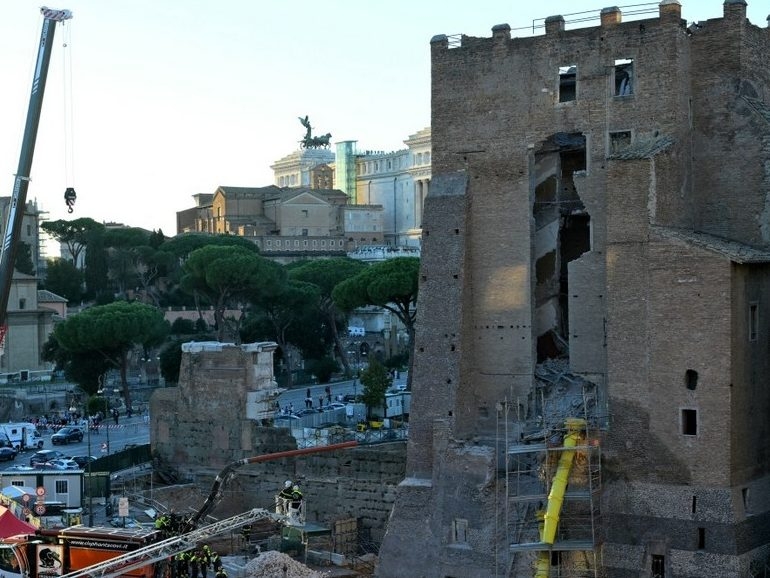A medieval tower, steeped in centuries of Roman history, suddenly crumbled in the heart of the city on Monday, plunging rescuers into a desperate race against time.
The Torre dei Conti, a landmark near the Colosseum, collapsed during renovation work, trapping a worker beneath tons of stone and debris. The initial midday collapse sent shockwaves through the area, immediately triggering a massive emergency response.
Firefighters swiftly rescued three workers, but another was critically injured and rushed to the hospital. The most harrowing situation involved the worker buried deep within the rubble, his fate hanging in the balance for hours.

The rescue operation proved extraordinarily complex. The tower, already weakened, continued to shift and threaten further collapse with every attempt to reach the trapped man. Initial approaches using aerial ladders were deemed too dangerous and quickly abandoned.
Rescuers cautiously deployed a drone to assess the precarious situation, seeking a safe path through the unstable wreckage. As darkness approached, a crane was brought in, equipped with powerful suction tubes to carefully remove rubble from a second-floor window.
Hope flickered as reports of “signs of life” emerged from the debris. During an earlier attempt, rescuers managed to provide the trapped worker with some protective covering, a small victory in the face of overwhelming odds.
Prefect Lamberto Giannini, Rome’s top law enforcement official, acknowledged the immense challenge. “It will be a very long operation,” he stated, emphasizing the need to balance the rescue effort with the safety of the rescuers themselves.
Hundreds of onlookers, many tourists, gathered to witness the unfolding drama, their faces etched with concern as firefighters battled against time and the crumbling structure. The scene was a stark reminder of the fragility of even the most enduring monuments.
The Torre dei Conti, dating back to the 13th century, once served as a residence for the family of Pope Innocent III. Though damaged by a 1349 earthquake and subsequent collapses in the 17th century, it remained a powerful symbol of Rome’s rich past.
The building, which had housed city hall offices until 2006, stood silent for years before the recent renovation began. Now, it stood as a scene of peril, a testament to the risks inherent in preserving history.
Federico Mollicone, chairman of the parliamentary culture committee, expressed the collective anxiety. “The firefighters risked their lives with the second collapse,” he said, “We are worried for the worker who remains trapped.”




